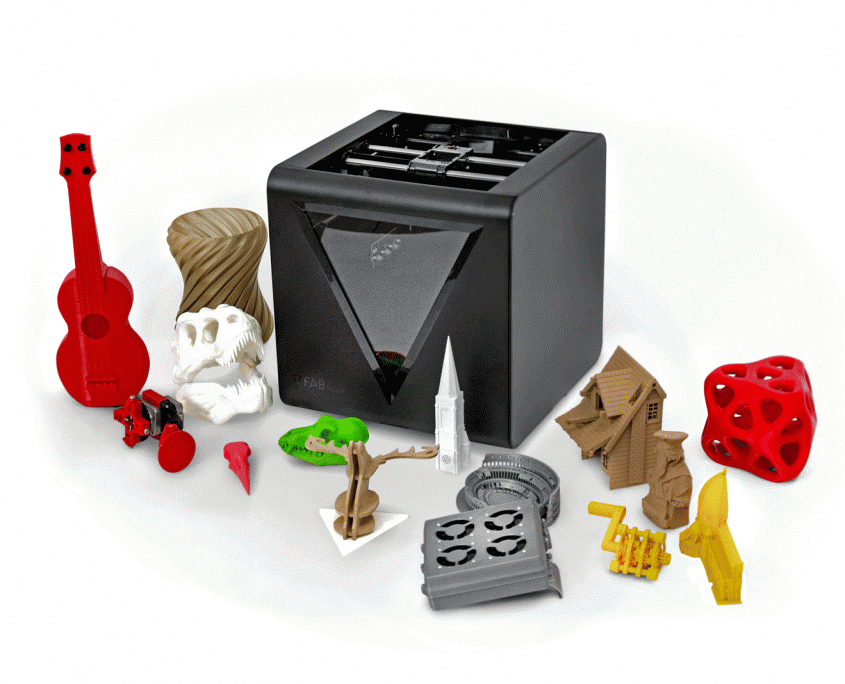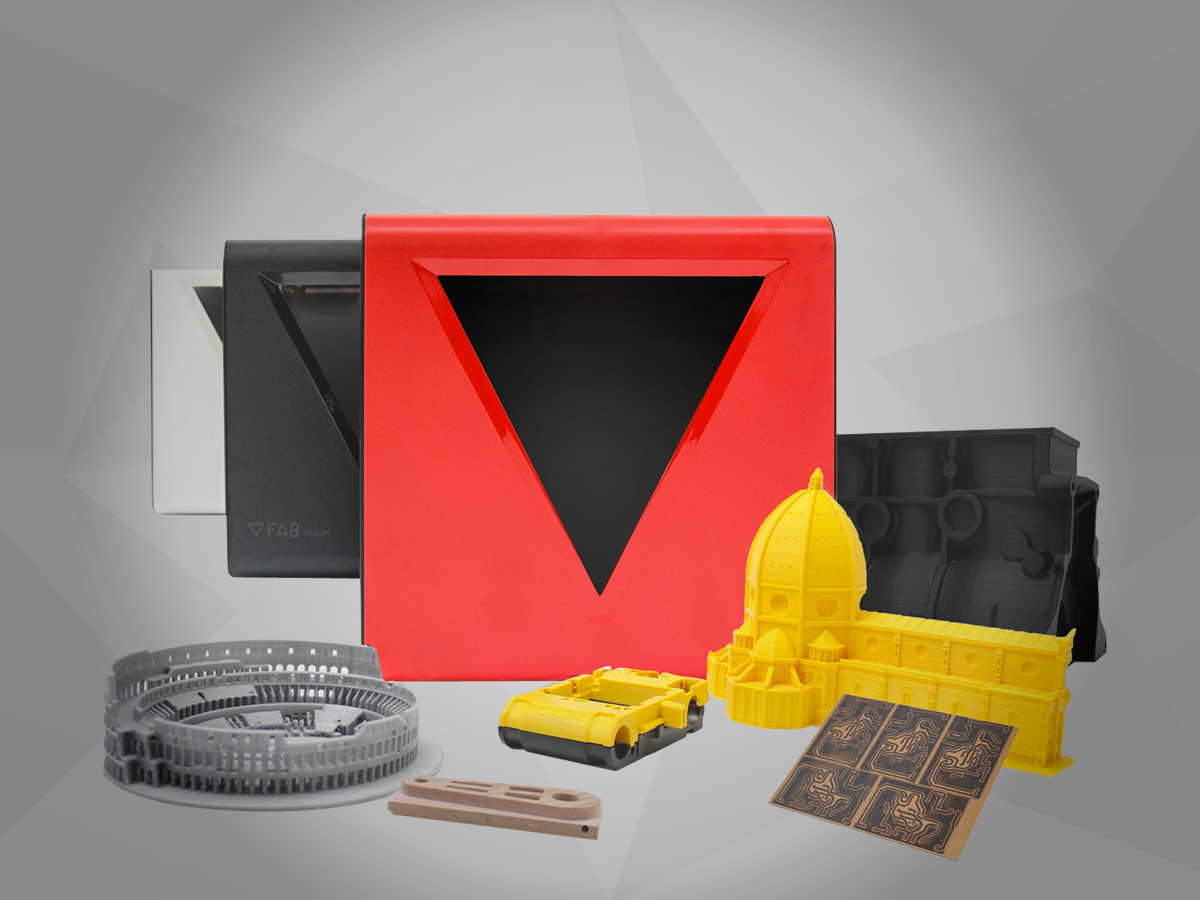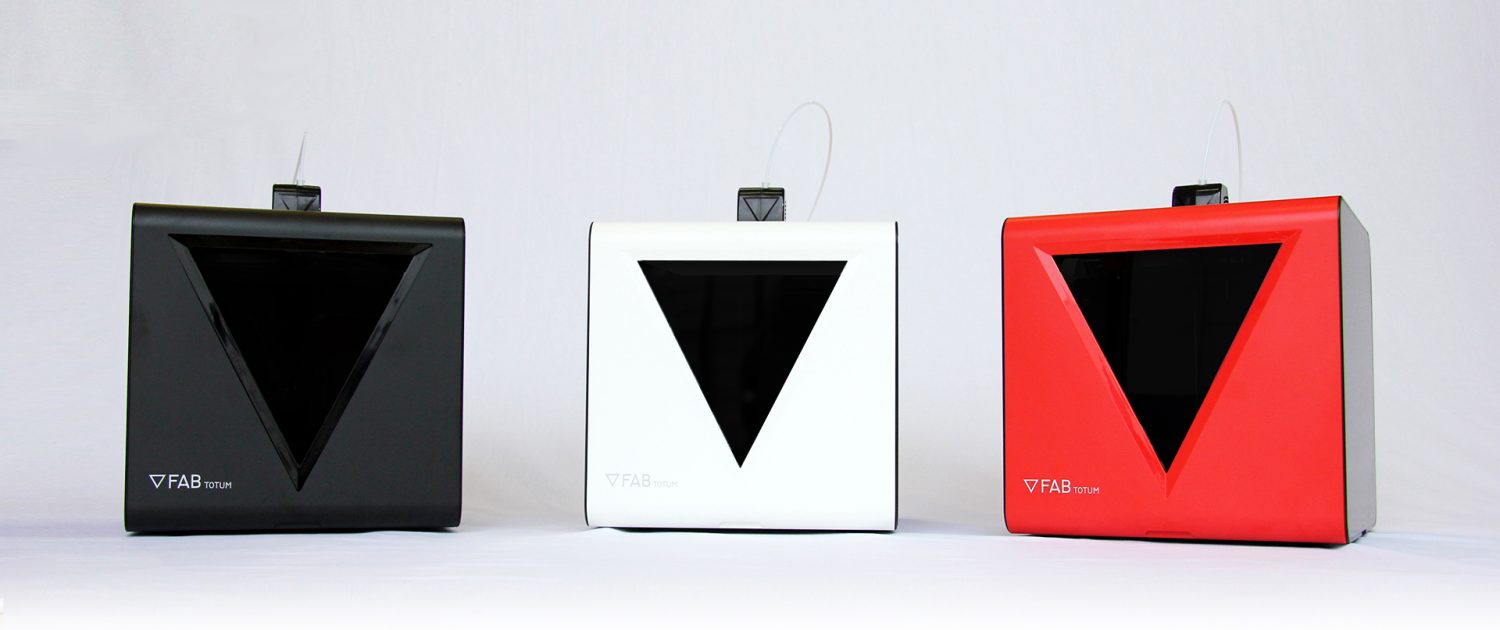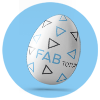3D Printers
with milling head and laser head
3D printer and Rapid Prototyping Machine: the FABtotum Personal Fabricator
3D printing is the technology that allows to create real objects starting from 3D drawn files.
It is taking rapid prototyping to a new stage: a 3D printer can realize objects of any size (depending on the product’s area: FABtotum’s one, for example, is 210x240x240mm) and can be kept on a desktop, right next to the computer.
Here is a bit of knowledge to understand why one should think of buying a 3D printer for am office, business or even for private home.
WHAT IS 3D PRINTING?
3D printing is an additive manufacturing solution that will increase the possibilities of many areas of interest, as anyone will be able to have a first idea of what his/her design looks like in real life. It will as well speed things up and help all those people who need to build samples, reproductions of bigger structures or even final products for their companies.
WHEN DID ALL THIS START?
There is more than a way to create with a 3D printer (see below) and every of them has a different history. The main two, FFF and SLA, have the same goal but different materials and techniques to work. They mainly come from the 70’s, when they have been invented to cope with the big industries request to produce fast prototypes.
Nowadays more ways are being added on a daily basis, but the mentioned two are still the most common and reliable.


WHICH ONES ARE THE DIFFERENCES BETWEEN FFF (aka FDM) AND SLA?
Fused Filament Fabrication (FFF)
This technology has been invented in the late 80s and it was firstly available only for bigger companies: the machines were big and very expensive. Today, thanks to the RepRap Project and to the expiration of the patent, it is quite easy to find affordable 3D printers like the FABtotum. Not many of them, anyway, are supported by a company but are more likely to be makers’ projects.
Here are the main reasons to prefer this solution:
- prices are generally lower for both the machine and materials;
- FFF can be quite quicker;
- sizes are bigger;
- materials range is wider (PLA, ABS, Nylon are the most common, see 3D Printing Materials).
FFF 3D printers are mainly divided in two other categories: >XYZ Cartesian 3D printers and Delta 3D printers. The first kind has three axis: a carriage moves on the X and Y and a square bed moves up and down on the Z, just like on the FABtotum. It allows to have a greater surface and it is of easier administration for the user. Delta 3D printers have an hexagonal or round bed and three arms that hold the extruder: in these products there are no fixed axis but all the movements are made by the arms.
Stereolithography (SLA)
This is the oldest one and was introduced to companies in the early 80s. Nowadays it is possible to have this technology shrinked in smaller products that can stand on a desktop. This means that any business can take advantage of it and have a rapid prototyping machine at their service without the need of asking to third parties.
Stereolithography works with special resins which react to light becoming solid. The rays follow the path of the code sent and solidify the small amount of liquid.
Here are the main reasons to pick this as first choice:
precision is higher as polymers are melted together and not layered;
any shape can be printed (no need for supporting materials, bridges are not a problem).
The alternatives to these two major choices for 3D printing are now starting to increase but there is still a lot of development ongoing. 3D printing is also being coupled with different technologies that will get to final users the chance of saving space and budget: the All-in-One Multifunctional 3D printers, just like the FABtotum.
This choice is the best one for people who need a mini laboratory right on the desktop. Normally it is easy to switch from a tool to another and they mostly have the same idea behind: GCODEs, which are the files used for creating 3D printed objects, are a long series of commands that moves the machine.


